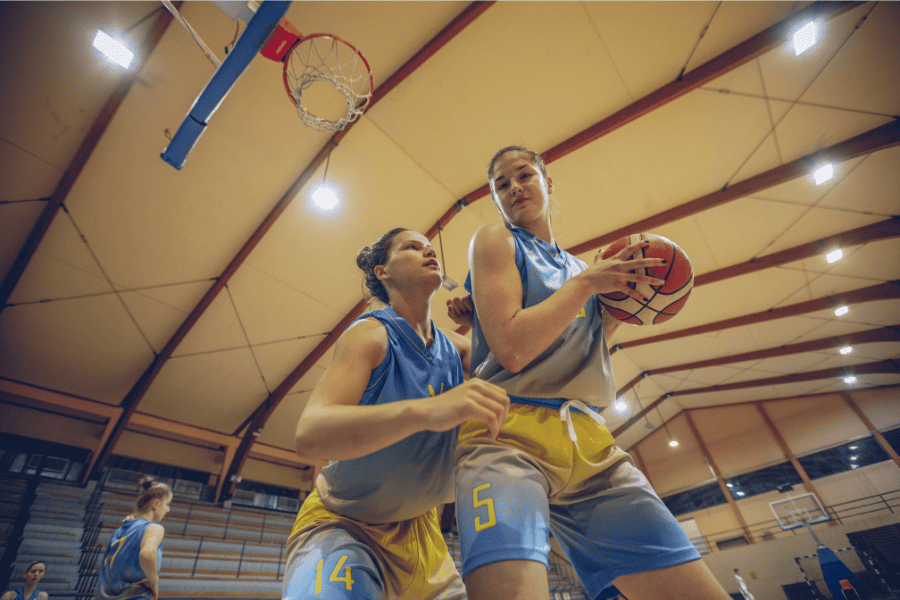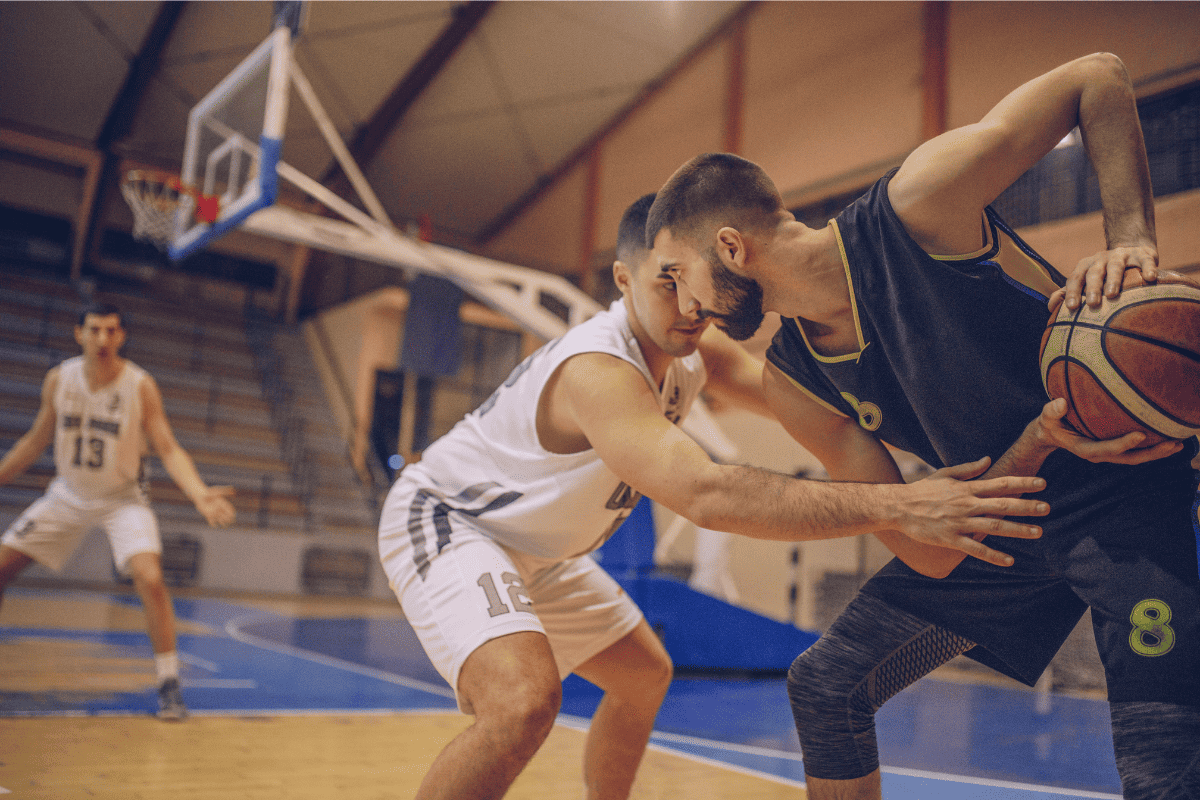What is a Pivot Foot in Basketball? (Fundamentals 101)
Basketball is a game of agility, strategy, and a fair share of rules. Among the essential techniques that players master is the use of a pivot foot. Let’s break down what a pivot foot is and why it’s a crucial skill in basketball.
Key Takeaways
- The pivot foot in basketball is a fundamental technique that allows a player to keep one foot grounded while moving the other to change direction, protect the ball, or create scoring opportunities.
- Mastering the mechanics of pivoting—maintaining a balanced stance, executing rotational movement, and shifting weight effectively—can enhance a player’s agility and strategic movement on the court.
Definition of a Pivot Foot in Basketball
In the simplest terms, a pivot foot is the one foot that must remain in contact with the floor until a player decides to dribble, shoot, or pass the ball. When a player stops dribbling, they must choose a foot to be their pivot foot.
This foot acts as a swivel, allowing the player to move in any direction while keeping one foot grounded. It’s like having your very own personal anchor on the court!
Mastering the Pivot Foot Technique in Gameplay
Mastering the pivot foot technique can significantly up your game. It allows players to maintain their balance, change directions quickly, and protect the ball from defenders.
Some of basketball’s greatest players are known for their exceptional pivoting skills, making it easier for them to maneuver around opponents and create scoring opportunities. In essence, a good pivot is the first step to a great play!
Players Known for Their Pivoting Skills
Think of legends like Michael Jordan or Tim Duncan; their ability to use the pivot foot effectively made them unpredictable and tough to guard. Watching their games could give anyone aspiring to improve their basketball skills a textbook lesson in pivoting.
The Rules Governing Pivot Foot in Basketball
Now, like with any technique, there are rules attached to the use of the pivot foot to keep the game fair and square.
Establishment of the Pivot Foot
When a player catches the ball or ends their dribble, they can choose either foot as the pivot foot. However, once chosen, the other foot becomes the “free” foot and can move around, but the pivot foot must stay put until the ball is dribbled again.
It’s up to the referees to keep a sharp eye on players’ feet. They ensure that the established pivot foot remains grounded and call a traveling violation if it lifts before the ball is dribbled again. It’s one of those details that referees are hawk-eyed about, ensuring the game stays fair.
Movement Restrictions
If a player lifts the pivot foot before dribbling, shooting, or passing, that’s considered a traveling violation, and the other team gets the ball. This rule is why mastering the pivot foot is essential—it keeps players in compliance with the rules while allowing them to move strategically on the court.
While the rules around the pivot foot are quite strict, there are some nuances. For example, if a player jumps, both feet must leave the ground at the same time, and they must release the ball for a pass or shot before landing.
Getting familiar with these exceptions can help players avoid pesky traveling calls and stay in the good graces of the referees.
This basic breakdown should give you a clearer understanding of what a pivot foot is in basketball and the rules surrounding it. With a solid grasp of this fundamental, you’re on your way to better navigating the court and maybe even throwing in a fancy spin move or two!
The Mechanics of Pivoting

Understanding the pivot foot is one thing, but mastering the mechanics of pivoting is where the real fun begins. It’s not just about keeping one foot on the ground; it’s about how you use that grounded foot to your advantage on the court.
The Stance and Body Position
A balanced stance is the starting point of a good pivot. Keeping your feet shoulder-width apart and your knees slightly bent allows for better balance and agility. It’s the stance that gives you the stability to rotate effectively without losing balance.
Your body posture too plays a significant role. Keeping your back straight and your head up not only helps in maintaining balance but also ensures you have a good view of the court. It’s all about being ready to make that next move, whether it’s a pass, a shot, or a dribble.
Executing the Pivot
Pivoting is essentially a rotational movement around your pivot foot. As you rotate, it’s crucial to keep your weight centered over your pivot foot to maintain balance. The ability to spin smoothly can throw off defenders and open up new angles on the court.
While pivoting, shifting your weight correctly is an art. It allows you to quickly change directions and keep defenders on their toes. The trick is to do it without compromising your balance or control over the ball.
Strategic Use of the Pivot Foot
Pivoting isn’t just a rule to follow; it’s a strategic tool that can significantly impact the game when used effectively.
Creating Space
A well-executed pivot can help create space between you and your defender, making it easier to pass, shoot, or dribble. It’s a way to keep the defender guessing and one step behind.
By pivoting effectively, you can open up passing and shooting lanes that weren’t there before. It’s about seeing the court from different angles and creating opportunities for you and your teammates.
Protecting the Basketball
Your body is a barrier between the defender and the ball, and pivoting helps maximize that barrier. By keeping the ball away from the defender as you pivot, you make it much harder for them to snatch it away.
Pivoting allows for better ball control as it gives you the time to assess the situation on the court, decide your next move, and execute it effectively without being rushed.
Pivoting is an art and a science, and mastering it can take your basketball game to a whole new level. So, the next time you find yourself on the court, remember the power of the pivot foot and use it to outmaneuver your opponents.
Practicing Pivot Foot Techniques
Now that we’ve dissected the theory behind the pivot foot, let’s dive into how one can enhance their pivoting prowess through dedicated practice. Like any skill in basketball, mastering the pivot foot requires time, patience, and the right set of drills.
Drills for Mastering Pivot Footwork
There are various drills designed to improve pivot footwork, such as the Pivot and Pass Drill or the Cone Pivot Drill. These drills help players become more comfortable with pivoting, improve balance, and learn to pivot in different directions effectively.
It’s about ingraining the movement into muscle memory so that it becomes second nature during a game.
Practice, they say, makes perfect. Consistent practice of pivot foot drills will gradually build your confidence and competence in using your pivot foot strategically during games. The key is to stay committed and keep practicing, even when it seems tough.
Learning from the Pros
One of the best ways to learn is by watching professionals at work. Analyzing game footage of skilled pivoters, understanding their movement, and the situations in which they utilize the pivot can provide invaluable insights. It’s like having a virtual mentor guiding you through the nuances of effective pivoting.
Basketball camps or clinics often offer focused training sessions on fundamental skills like pivoting. Here, you can receive hands-on coaching from experienced trainers, and get real-time feedback on your pivot technique, helping you make necessary adjustments to improve.
Conclusion
The pivot foot is more than just a rule in basketball; it’s a strategic tool that, when mastered, can elevate a player’s game to new heights. From maintaining balance to creating space and protecting the ball, the pivot foot is a cornerstone of effective gameplay.
So, whether you’re a budding basketball fan or a seasoned player looking to refine your skills, embracing the pivot foot technique and dedicating time to practice can significantly improve your gameplay.
Now it’s your turn to hit the courts, practice those pivots, and start making a difference in your games. Remember, every pro was once a beginner who decided to step onto the court and learn the game inside out. Your pivot journey begins now, one turn at a time!

